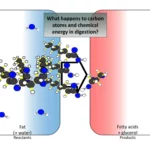Ever wondered what happens to our bodies after we die? As our mortal coil gradually decomposes, an intriguing process unfolds—the transformation into a skeleton. This journey may be a macabre topic, but it holds captivating scientific mysteries that unveil the profound fragility and resilience of our physical existence. Join us as we unravel the tale of body skeletonization, an enchanting voyage where time dances with decay, leaving an enduring legacy in the bones that remain.
Unveiling the Process of Body Skeletonization
Ever wonder what happens to our bodies after we die? It’s a thought many of us try not to dwell on, but it’s a natural process that’s been happening for as long as life itself. One of the most fascinating stages of this journey is body skeletonization, where everything but our bones disappears.
Think of it like this: our bodies are like intricately built houses, with bones as the sturdy frame and muscles, organs, and skin forming the walls and roof. When the house is no longer lived in, nature steps in to reclaim its materials. In the case of our bodies, this means decomposition.
Several factors influence how quickly a body becomes skeletonized. Just like food spoils faster in a warm environment, a higher temperature speeds up decomposition. Humidity is key too; think about how quickly bread molds in a humid environment compared to a dry one. The same principle applies to our bodies.
Then there are the insects and animals. Nature’s cleanup crew, if you will. Creatures like flies and beetles, and even larger scavengers, play a crucial role in breaking down the soft tissues, accelerating the process of skeletonization.
Now, you might be thinking, “Okay, that’s a bit gruesome. Why is this important?” Well, body skeletonization is much more than meets the eye. It holds significant value in several fields, particularly forensic science and archaeology.
Imagine a detective arriving at a crime scene. A skeletonized body can reveal vital clues about the time of death, the potential cause, and even help identify the deceased. Forensic scientists are like detectives of the past, using skeletal remains to piece together the story of what happened.
Archaeologists, on the other hand, view skeletonized remains as windows into bygone eras. These skeletal whispers tell stories of ancient populations, their health, diets, and even their cultural practices. It’s like assembling a puzzle, with each bone providing a piece of the picture of human history.
Of course, studying something as sensitive as the remains of a human being requires a great deal of respect and consideration. There are important ethical concerns regarding the treatment of the deceased and their families. Researchers must always balance their pursuit of knowledge with the utmost respect for the individuals whose remains they study.
In essence, body skeletonization is a complex dance between life and death, a natural process that, while seemingly macabre, offers valuable insights into who we are, where we came from, and the intricate workings of the natural world.
Decomposing Timelines: How Long Does Skeletonization Take?
So, we’ve talked about what happens as a body decomposes, but one question that often pops up is just how long it takes to reach the skeletal stage. It’s not a one-size-fits-all answer – think of it like baking a cake: change the oven temperature or ingredients, and you get a different outcome. Similarly, a bunch of factors influence the speed of skeletonization.
Let’s break down the big players:
First up, Mother Nature’s Influence:
Temperature is Key: Imagine leaving a piece of fruit out in the summer heat versus popping it in the fridge. The same logic applies here. Heat acts like a fast-forward button for decomposition, with bodies in warmer climates potentially skeletonizing within weeks. On the flip side, cold temperatures hit the brakes, sometimes preserving remains for years, decades, even centuries! It’s like hitting the pause button on decay.
Humidity Matters: Picture a damp, humid environment – perfect breeding ground for all sorts of life, right? Well, that includes the bacteria and insects that break down organic matter. High humidity speeds up decomposition, while dry, arid places can actually lead to mummification, where the body dries out and decomposition slows down significantly.
Burial Depth and Coffins: Like a protective barrier, coffins and deep burials shield remains from the elements and hungry insects, slowing down the decomposition process. In contrast, bodies laid to rest without such protection tend to skeletonize much faster.
Now, let’s Talk Biology:
The Little Helpers: Insects: Flies, and more specifically their maggots, are like nature’s clean-up crew, playing a crucial role in consuming soft tissues and accelerating the skeletonization process. It’s not the most pleasant image, but it’s a natural part of the cycle. And let’s not forget other scavengers, like beetles, that contribute to the breakdown as well.
The Burial Environment: Think of the ground not just as dirt, but as a whole ecosystem. The type of soil, its acidity, and how much moisture it holds – these factors all influence decomposition. For instance, acidic soils tend to slow down the process compared to alkaline soils.
The Takeaway?
There’s no magic number when it comes to how long skeletonization takes. It’s a fascinating dance between the environment and biology, influenced by a whole orchestra of factors. While we’ve learned a lot, ongoing research continues to unveil the intricacies of this natural process. So, the next time you stumble upon a discussion about decomposition, remember it’s a complex puzzle with a constantly evolving understanding!
Skeletonization in Medical Terms: A Surgical Perspective
In the medical field, the term “skeletonized” takes on a slightly different meaning. Imagine a surgeon meticulously removing the skin and flesh from a grape, leaving only the delicate seeds within. This, in essence, is what surgical skeletonization entails – the careful removal of soft tissues to expose the underlying bone structure.
This technique is particularly valuable in procedures where clear visualization and precise access are critical. Take, for instance, fallopian tube removal or even open-heart surgery. By carefully stripping away surrounding tissues, surgeons gain an unobstructed view of the surgical field, enhancing the safety and effectiveness of the operation.
But the medical significance of skeletonization extends beyond the operating room. Forensic experts utilize skeletonized bones as crucial clues in investigations, much like detectives piecing together evidence at a crime scene. The condition of these skeletal remains can provide valuable insights into:
* Time Since Death: While not an exact science, the degree of skeletonization can help estimate the postmortem interval, offering a timeline for investigators.
* Individual Identification: Skeletal features, such as sex, age, ancestry, and past injuries, can aid in identifying deceased individuals.
* Cause of Death: Trauma to the bones, such as fractures or bullet wounds, can provide clues about the circumstances surrounding death.
The study of skeletonized remains, however, is not without its ethical considerations. Respect for the deceased and their families is paramount. Forensic anthropologists and archaeologists must navigate these sensitive waters, balancing the pursuit of knowledge with the need to treat human remains with dignity.
Embalming and Decomposition: Slowing Down the Inevitable
Okay, so you know how embalming is meant to preserve a body? It’s important to remember that it doesn’t hit the pause button on decomposition altogether. Think of it more like slowing things down. Instead of stopping the process in its tracks, embalming just buys some time. How much time, though? Well, that’s where things get interesting.
You see, a bunch of different things can affect how long it takes for an embalmed body to decompose. Imagine a metal coffin versus one made of plain old wood. The metal one is like a fortress, right? It’s going to protect the body and slow down decomposition way more than a wooden one. The same goes for the type of wood – hardwoods are tougher and last longer, so they’ll slow things down compared to softer woods.
Then there’s the whole burial environment to think about. Temperature plays a huge role – a hot and humid environment is like a playground for bacteria, speeding up decomposition. Dry and chilly conditions? Not so much. It’s kind of like how food spoils faster when it’s left out on a hot day. Then you’ve got the soil – its acidity and even how deep the body is buried can make a big difference.
And of course, we can’t forget about the embalming process itself. Think of it like baking a cake – the better the ingredients and the more carefully you follow the recipe, the better the results. Using top-notch preservatives and making sure the embalming is done thoroughly will definitely slow down decomposition compared to a rushed job with lower-quality stuff.
Here’s the thing: even with embalming, the body doesn’t stay pristine forever. Right after embalming, things are pretty much on hold because the fluids do a good job of keeping bacteria at bay. But over time, even those fluids start to break down. It’s a gradual process, but eventually, those soft tissues – muscles, organs, that kind of thing – they start to liquefy. What’s left? Basically, just the skeleton, and bones? They take a ridiculously long time to decompose.
Now, I know what you’re thinking – how long is “a ridiculously long time?” Well, there are some experts who say that a typical timeline for an embalmed body buried in a coffin is somewhere between five to ten years. That’s when most of the soft tissues are basically gone, leaving mostly bones behind. But remember what we said about the quality of the embalming job? A really good embalming job might stretch that timeline out even further.
It’s important to remember that decomposition is a natural process, and there’s no single, set-in-stone answer for how long it takes. There are just too many factors involved. But hopefully, this gives you a better understanding of the process and the things that can impact it.
Are you obsessed about unusual and fascinating things? If so, you should definitely learn more about the existence of bone hatchets. Also, you wouldn’t want to miss the broad faced sac spider, an animal that is as unique as its name.
- SYBAU See You Baby Meaning: Gen Z Slang Evolves - July 1, 2025
- Unlock Your Inner Youth: Lifestyle Secrets for a Vibrant Life - July 1, 2025
- Decode SYBAU Meaning: Gen Z Slang Explained - July 1, 2025






